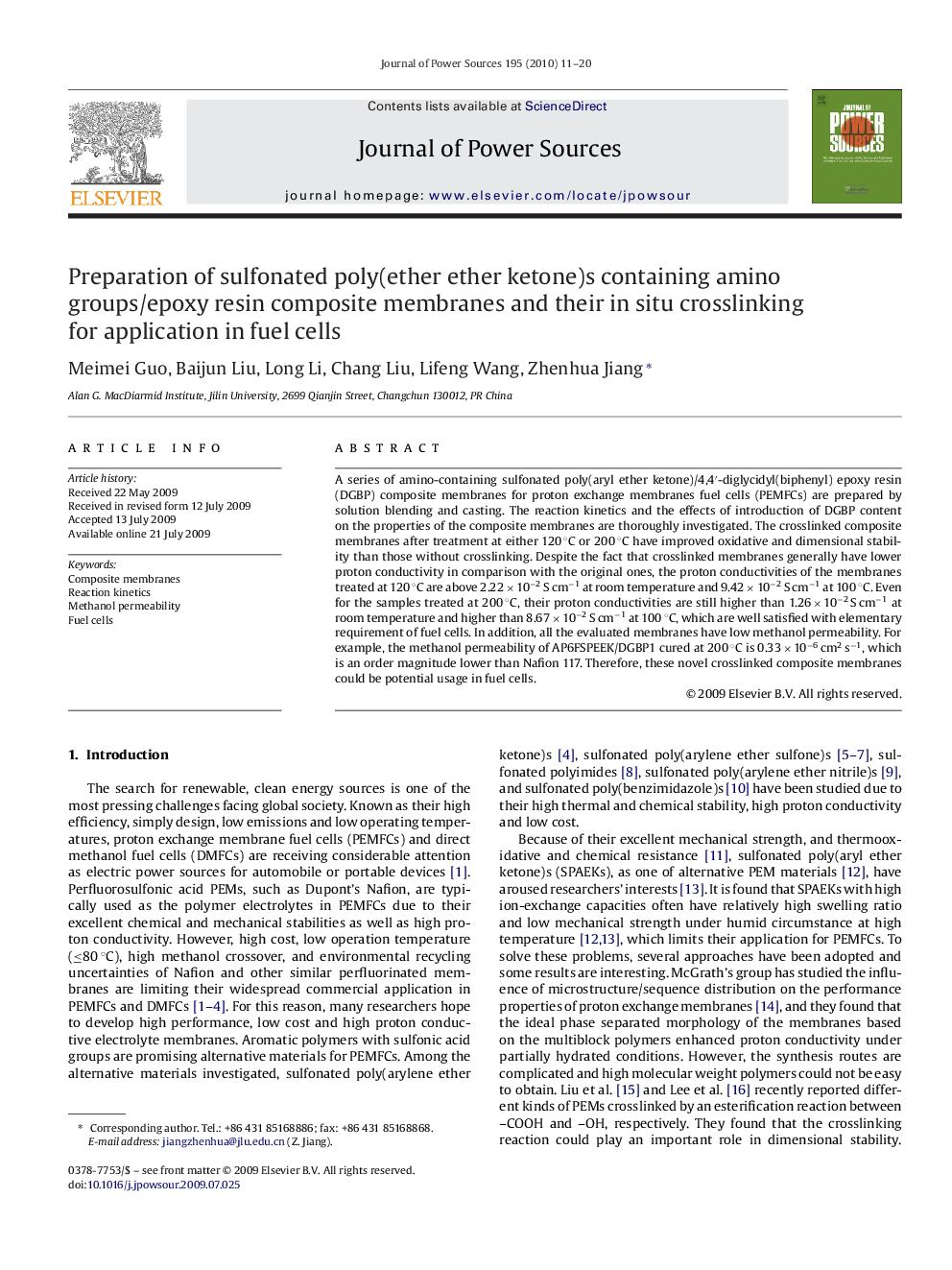| Article ID | Journal | Published Year | Pages | File Type |
|---|---|---|---|---|
| 1293942 | Journal of Power Sources | 2010 | 10 Pages |
A series of amino-containing sulfonated poly(aryl ether ketone)/4,4′-diglycidyl(biphenyl) epoxy resin (DGBP) composite membranes for proton exchange membranes fuel cells (PEMFCs) are prepared by solution blending and casting. The reaction kinetics and the effects of introduction of DGBP content on the properties of the composite membranes are thoroughly investigated. The crosslinked composite membranes after treatment at either 120 °C or 200 °C have improved oxidative and dimensional stability than those without crosslinking. Despite the fact that crosslinked membranes generally have lower proton conductivity in comparison with the original ones, the proton conductivities of the membranes treated at 120 °C are above 2.22 × 10−2 S cm−1 at room temperature and 9.42 × 10−2 S cm−1 at 100 °C. Even for the samples treated at 200 °C, their proton conductivities are still higher than 1.26 × 10−2 S cm−1 at room temperature and higher than 8.67 × 10−2 S cm−1 at 100 °C, which are well satisfied with elementary requirement of fuel cells. In addition, all the evaluated membranes have low methanol permeability. For example, the methanol permeability of AP6FSPEEK/DGBP1 cured at 200 °C is 0.33 × 10−6 cm2 s−1, which is an order magnitude lower than Nafion 117. Therefore, these novel crosslinked composite membranes could be potential usage in fuel cells.
